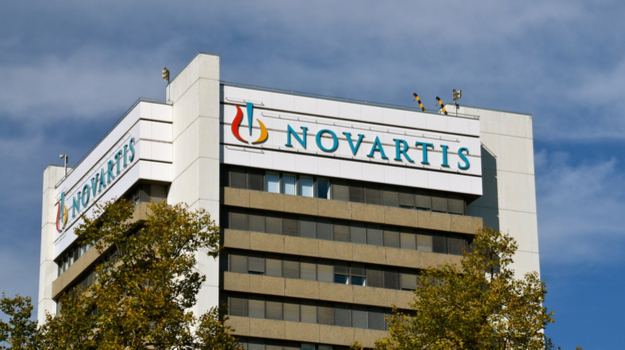The first treatment for adult patients with metastatic non-small cell lung cancer (NSCLC) who also have a specific genetic mutation was approved Wednesday by the U.S. Food and Drug Administration (FDA).
Developed by Novartis, the drug, Tabrecta™ (capmatinib), is designed for a type of NSCLC that has spread to other parts of the body and cannot be removed by surgery. It specifically targets NSCLC tumors that have an abnormal mesenchymal-epithelial transition gene that leads to MET exon 14 skipping (METex14).
Trials showed an overall response rate of 68% in treatment naïve patients, and 41% in previously-treated METex14 patients. This oral MET inhibitor is expected to become available to patients in the coming days.
“Lung cancer is increasingly being divided into multiple subsets of molecularly defined populations with drugs being developed to target these specific groups,” said Richard Pazdur, M.D., director of the FDA’s Oncology Center of Excellence and acting director of the Office of Oncologic Diseases in the FDA’s Center for Drug Evaluation and Research. “Tabrecta is the first approval specifically for the treatment of patients with non-small cell lung cancer whose tumors have mutations that lead to MET exon 14 skipping. This patient population now has an option for a targeted therapy, which they didn’t have prior to today.”
NSCLC is a disease in which malignant cancer cells form in the tissues of the lung. It is the most common type of lung cancer, accounting for 85% to 90% of the 2 million lung cancer cases throughout the world, and about 228,000 in the U.S. While nearly 75 of those patients have a genomic mutation, only 3% to 4% (4,000 to 5,000 patients) have the METex14 mutation. Without a targeted therapy, prognosis was poor.
The danger in this form of cancer is the high likelihood that the cancer cells will spread from the lungs to other organs and body parts. Cancer metastasis consists of a sequential series of events, and MET exon 14 skipping is recognized as a critical event for metastasis of carcinomas.
Along with Tabrecta, the FDA also approved a FoundationOne® CDX (F1CDx) to detect mutations that lead to MET exon14 skipping within tumors. F1CDx is a next-generation sequencing-based in vitro diagnostic device that is capable of detecting several mutations.
“With NSCLC, understanding whether a mutation is driving the cancer is critical, and it’s important for doctors and patients to use comprehensive biomarker testing at the time of diagnosis or progression to check for mutations like those that cause METex14,” said Andrea Ferris, president and CEO of LUNGevity. “Knowing more about the molecular makeup of their tumor will help patients and their healthcare teams make informed treatment-related decisions from the start.”
Novartis was granted Breakthrough Therapy Designation for capmatinib. According to FDA guidelines, treatments that receive Breakthrough Therapy Designation must target a serious or life-threatening disease and demonstrate a substantial improvement over existing therapies on one or more significant preliminary research endpoints. It was approved under the Accelerated Approval pathway and given Priority Review designation as well as Orphan Drug designation. The FDA viewed this as a part of its commitment to the health of seriously ill patients despite the COVID-19.
“In the face of the COVID-19 pandemic, our regular work on reviewing treatments for patients with cancer is moving forward,” Pazdur said. “We are working to address critical issues for patients with cancer and their health care providers and continuing to expedite oncology product development in this critical time.”
The approval of Tabrecta is based on results from the pivotal GEOMETRY mono-1, a Phase II multi-center, non-randomized, open-label, multi-cohort study in adult patients with EGFR wild-type, metastatic NSCLC. The trial evaluated 97 adult patients.
Tabrecta, a kinase inhibitor, works by blocking a key enzyme that helps tumor cell grow.
In the METex14 population (n=97), the confirmed overall response rate was 68% (95% CI, 48-84) and 41% (95% CI, 29-53) among treatment-naive (n=28) and previously treated patients (n=69), respectively, based on the Blinded Independent Review Committee (BIRC) assessment per RECIST v1.11.
In patients taking Tabrecta, the study also demonstrated a median duration of response of 12.6 months (95% CI, 5.5–25.3) in treatment-naive patients (19 responders) and 9.7 months (95% CI, 5.5-13.0) in previously treated patients (28 responders)1. There is no data to determine whether the increased duration of response will translate into long lives for patients. Studies to determine longer-term effects are ongoing.
The most common treatment-related adverse events, experienced by 20 or more of the patients, are peripheral edema, nausea, fatigue, vomiting, dyspnea, decreased appetite. Additional common effect included weakness or tiredness, diarrhea or constipation, cough, paint in the chest, fever, back pain, and weight loss.
“Non-small cell lung cancer is a complex disease, with many different possible mutations that may encourage the cancer’s growth,” said Juergen Wolf, M.D., from the Center for Integrated Oncology, University Hospital Cologne, and lead investigator for the GEOMETRY study. “MET exon 14 skipping is a known oncogenic driver. With today’s decision by the FDA, we can now test for and treat this challenging form of lung cancer with a targeted therapy, offering new hope for patients with NSCLC harboring this type of mutation.”
